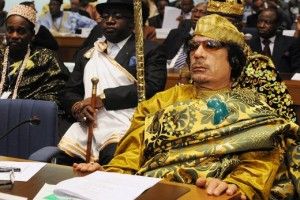How the US Seized $30 Billion of Qaddafi's Money
The Treasury Department team had been working nonstop on a plan to freeze Libyan assets in U.S. banks, hoping they might snare $100 million or more and prevent Moammar Gaddafi from tapping it as he unleashed deadly attacks against protesters who wanted him gone.
Now, at 2:22 Friday afternoon, Feb. 25, an e-mail arrived from a Treasury official with startling news. Their $100 million estimate was off — orders of magnitude off.
The e-mail said there was in “excess of $29.7 Billion — yes, that’s a B.”
And most of the money was at one bank.
It was a piece of extraordinary good fortune for the Obama administration at a crucial moment in the efforts to address the bizarre and deadly events unfolding in Libya.
Never before had U.S. officials so quickly launched economic sanctions affecting so many assets of a targeted country.
The frenetic 72 hours leading up to the Executive Order 13566 illustrate how a process of identifying and freezing assets — something that customarily has taken weeks or months — has become one of the first tactical tools to employ in the midst of fast-breaking crises.
It also shows that government officials have learned from other recent economic sanction efforts, including against Iran and North Korea. Instead of being a secondary measure, as in the past, economic sanctions have become a centerpiece of national security policy.
The same global electronic networks that dictators use to move billions in state assets can also be turned against them, when government and financial industry officials summon the will. The successful Libyan sanctions effort relied on cooperation with a wide range of financial firms in the United States, including the bank holding the bulk of the Libyan assets, which Treasury officials have declined to identify.
Officials also would not provide detailed information breaking down the assets, which include holdings by individuals and Libya’s sovereign wealth fund. Investigators are expected to focus on whether any laws were broken in the handling of the money.
The $32 billion frozen so far by the United States represents a significant portion of the nation’s wealth. In 2009, Libya had a gross domestic product of $62 billion; its sovereign wealth fund is estimated at $40 billion and its central bank reserves at $110 billion.
Click here to read more.


